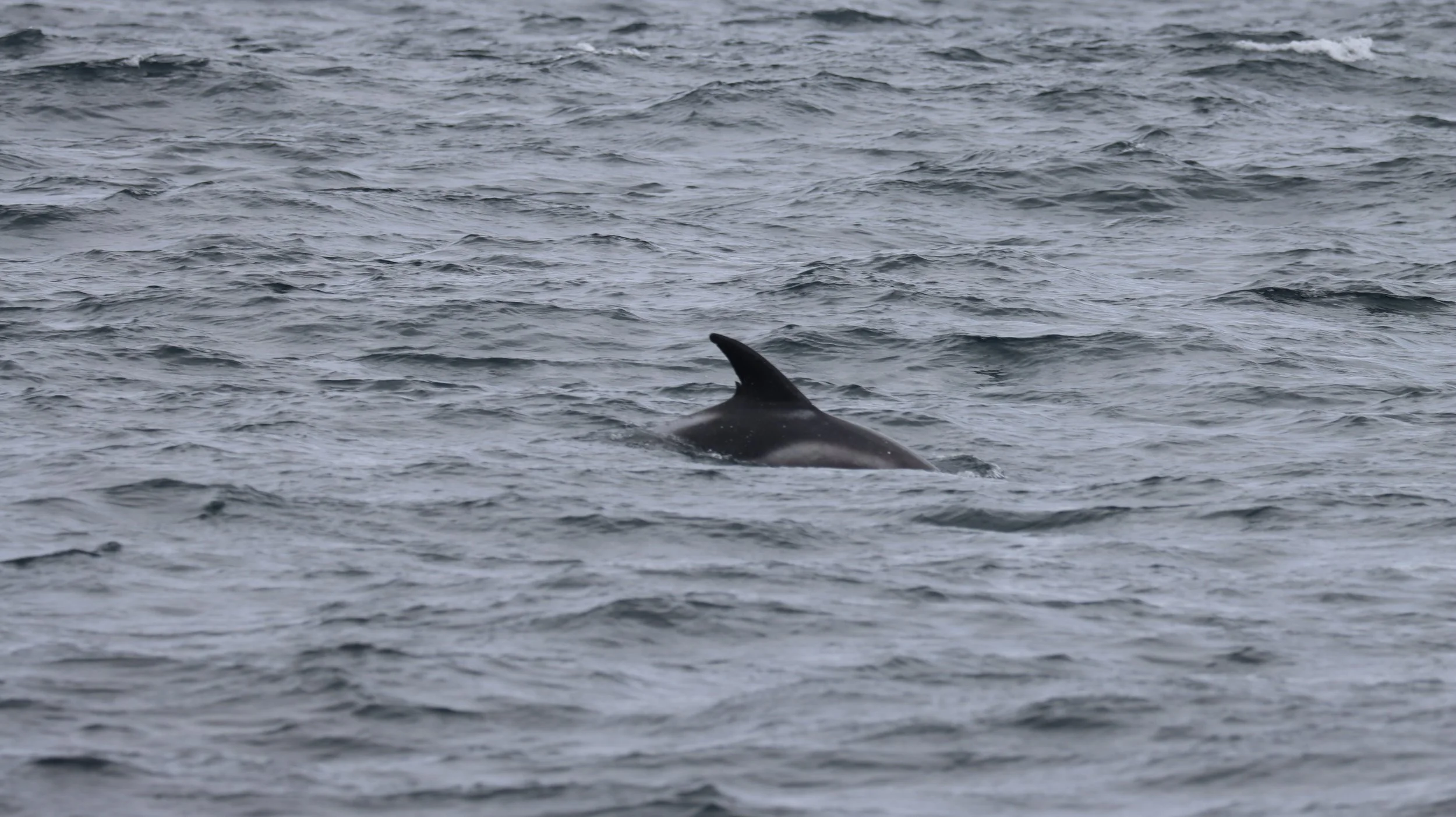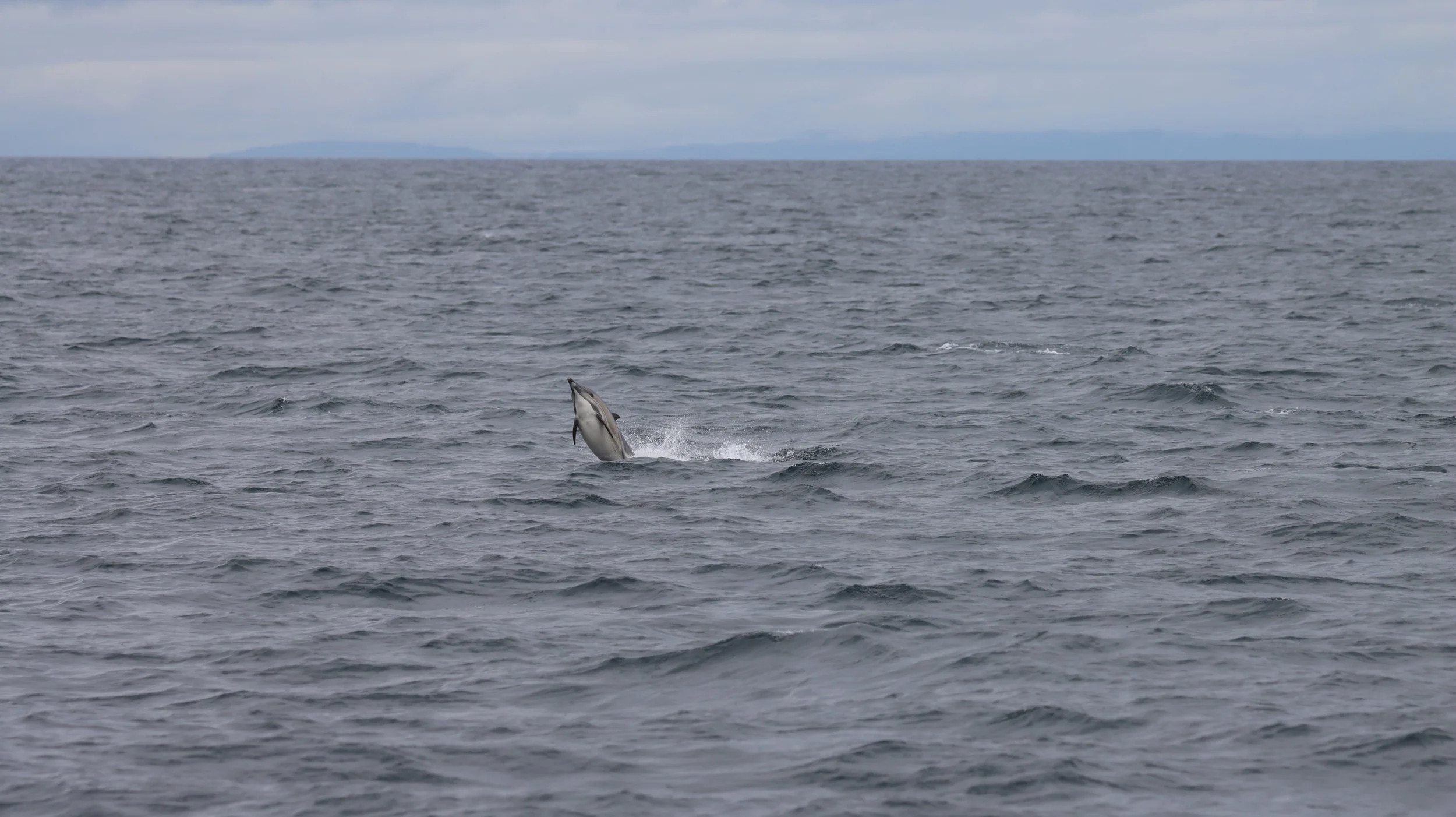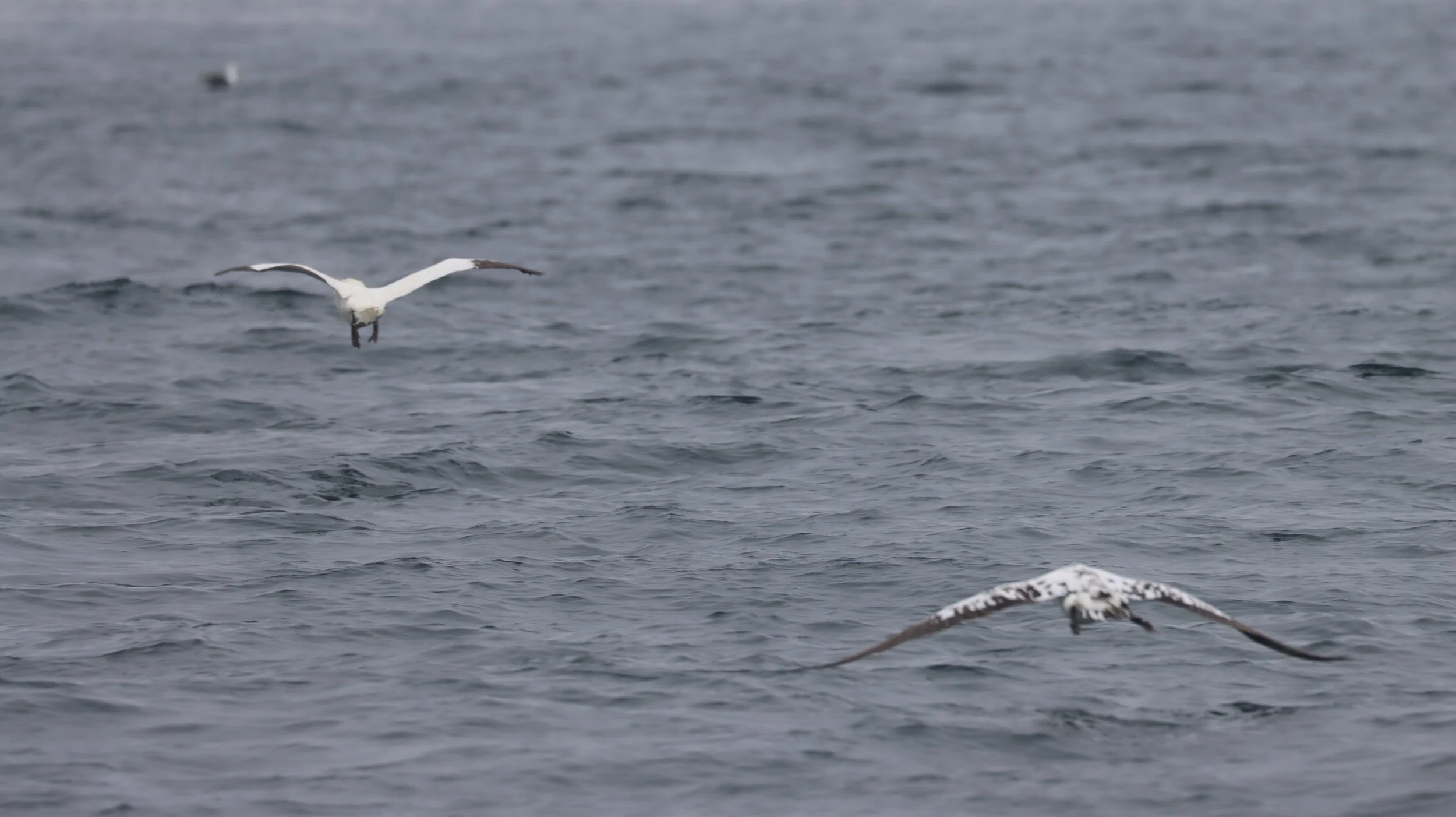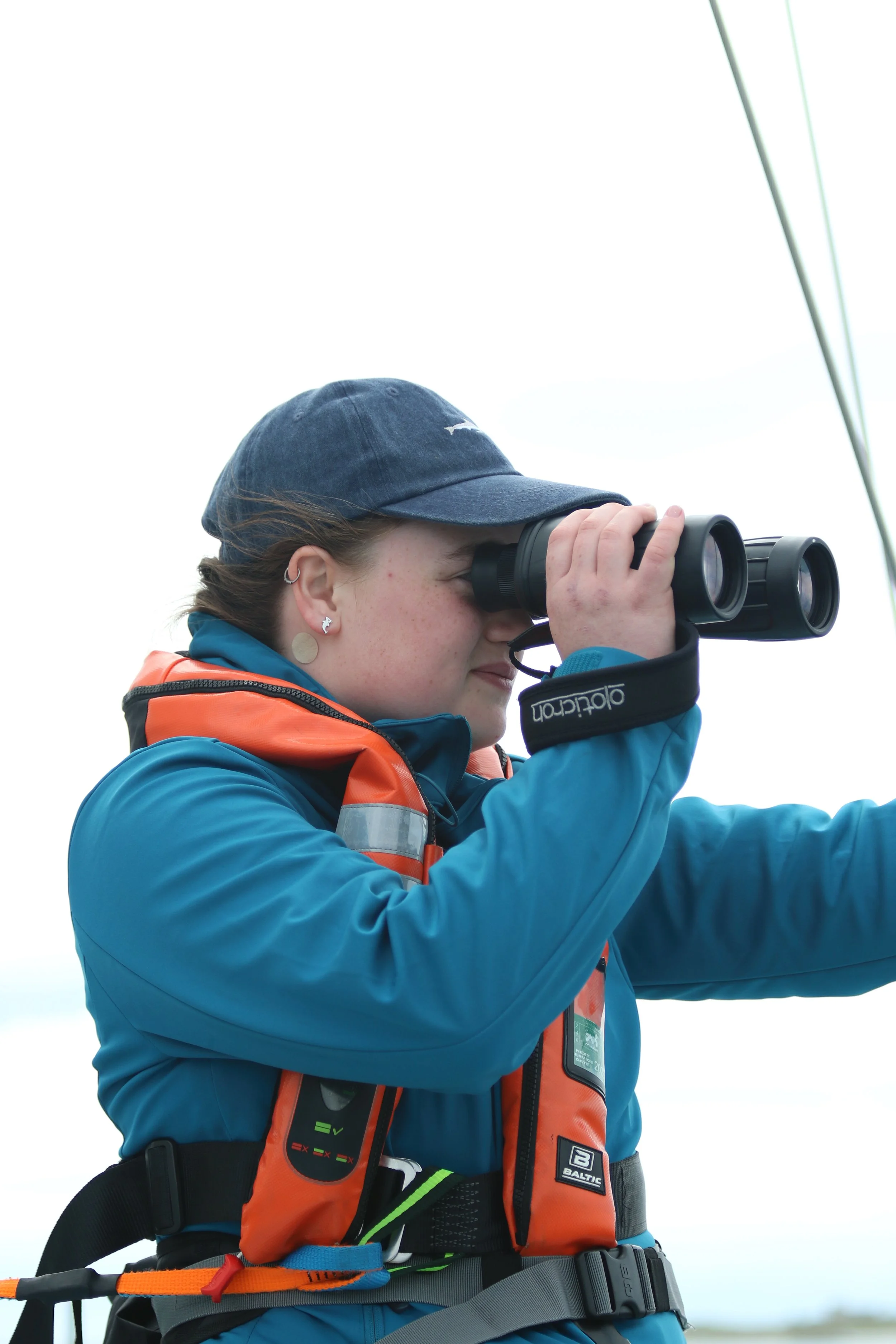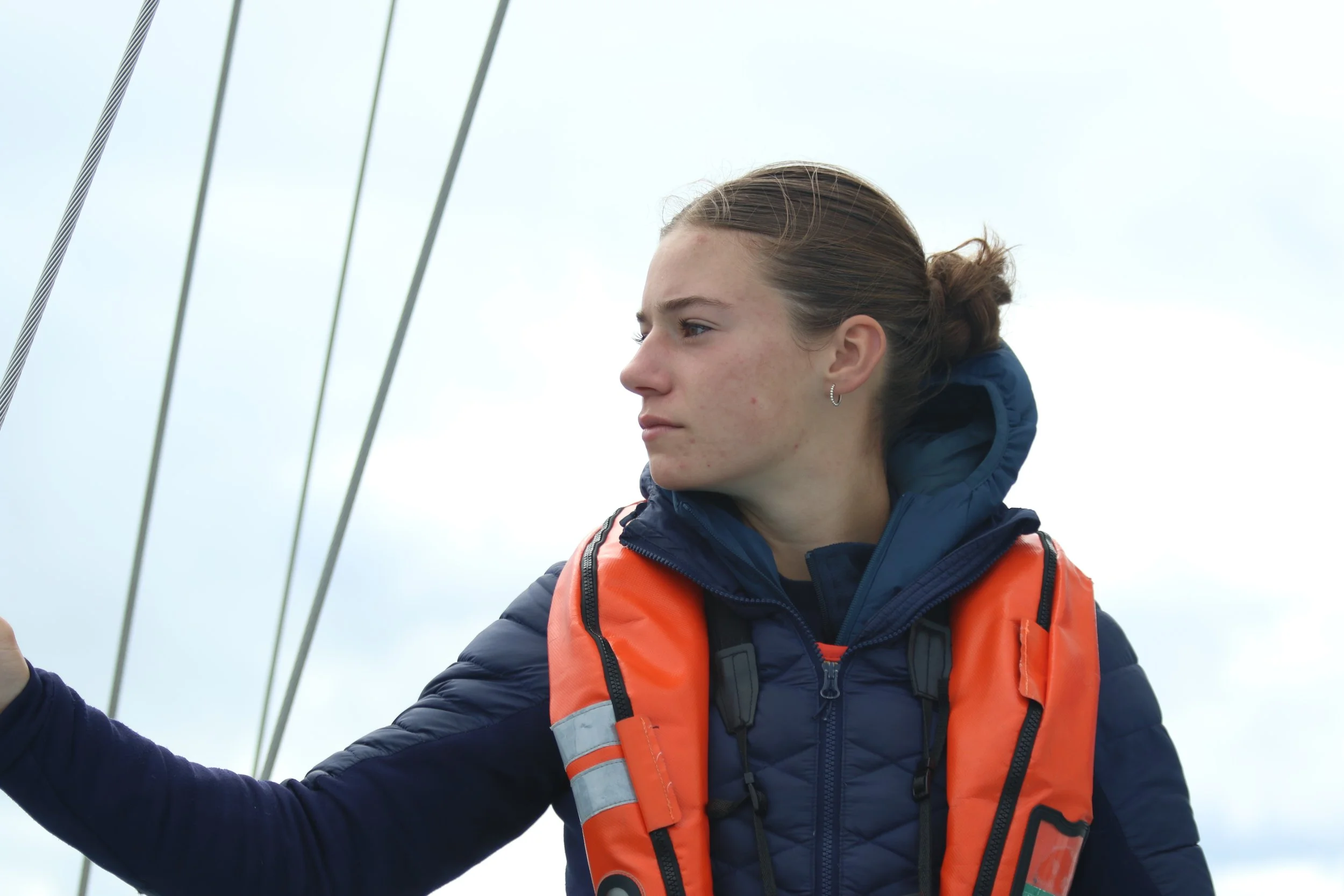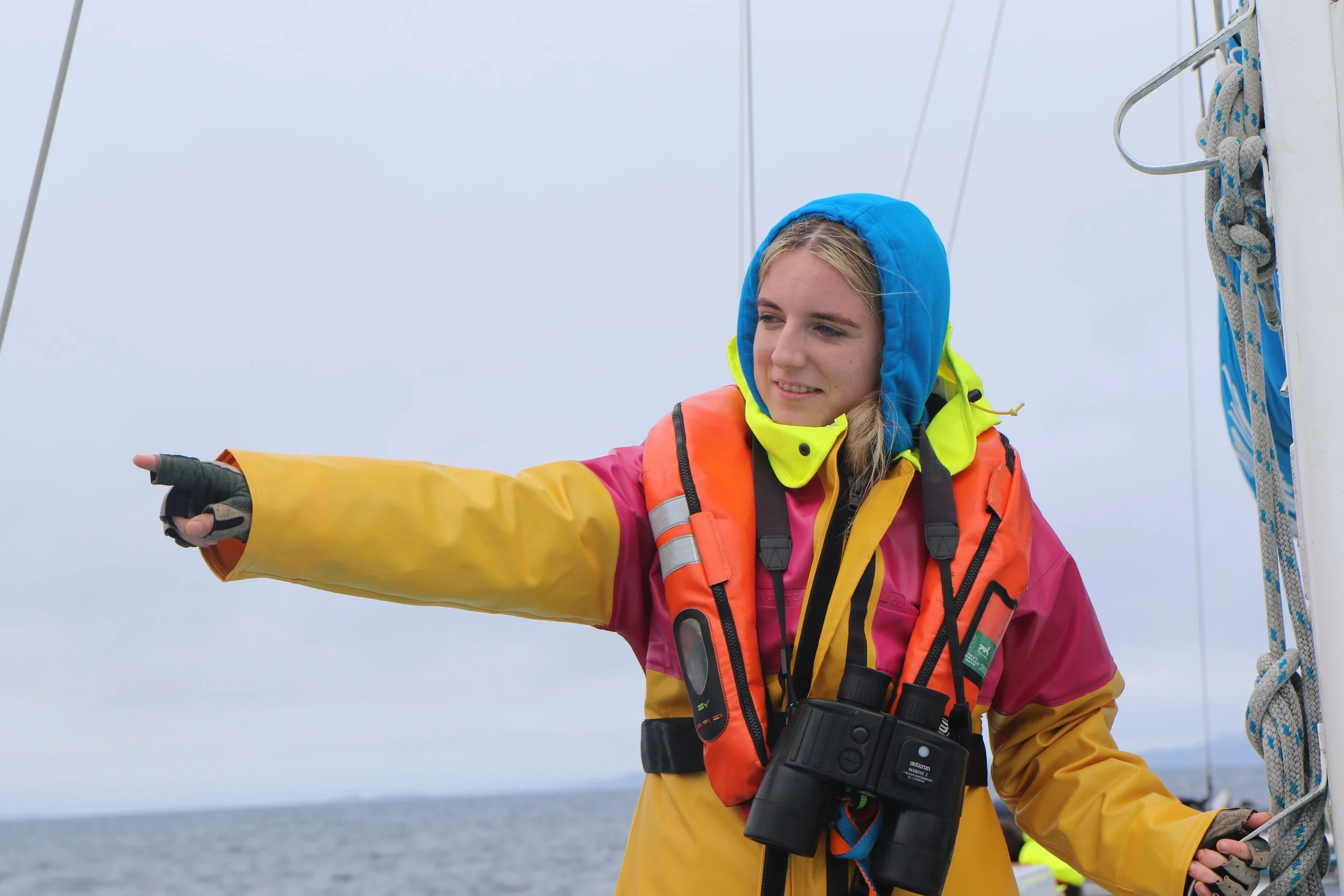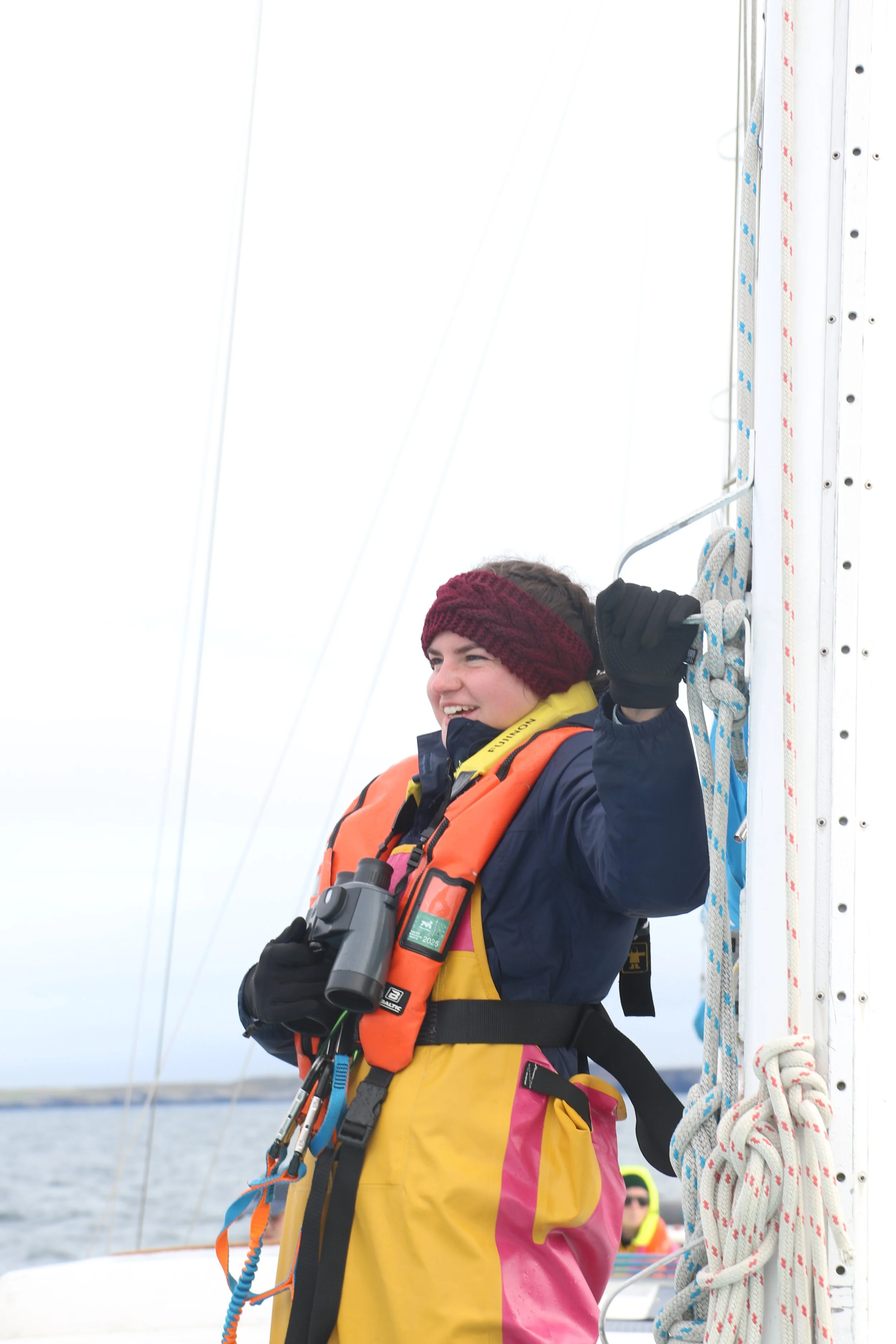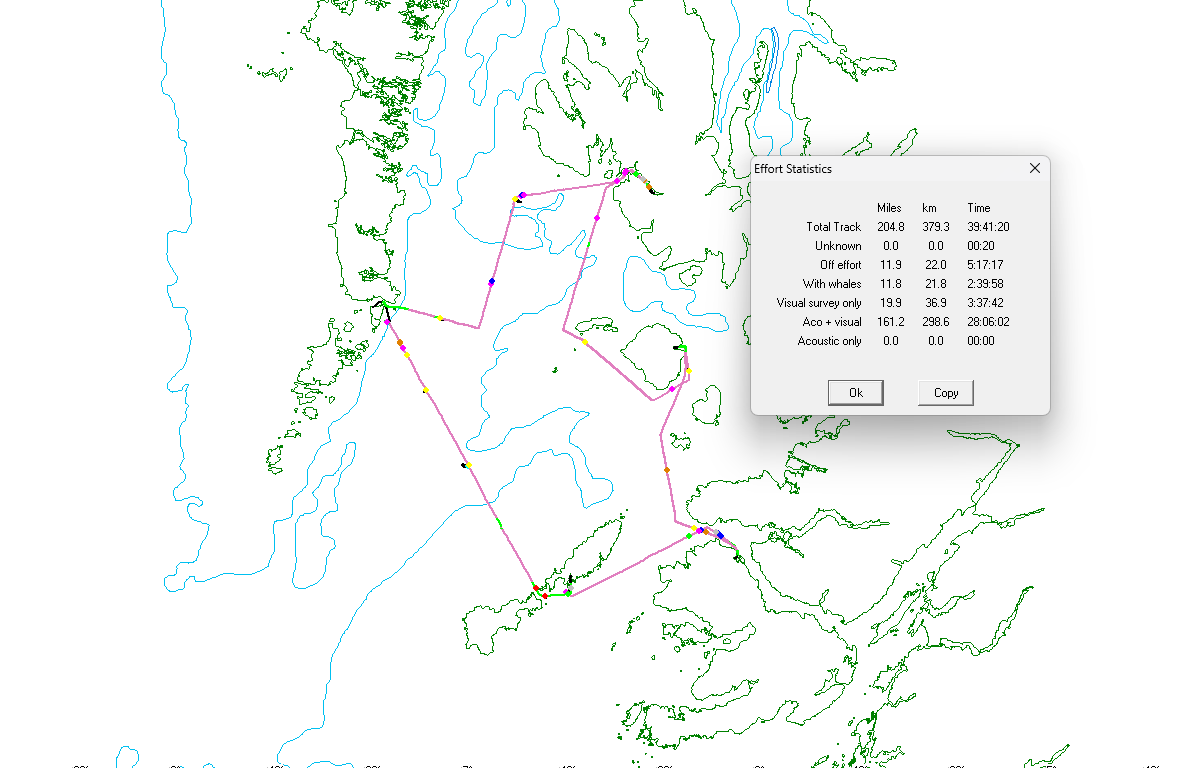Basking sharks, white beaks and celebratory cinnamon swirls on our first teen team of 2025
Six inquisitive teens joined us aboard our research vessel, Silurian, to explore the Sea of the Hebrides, gathering visual and acoustic data.
Each field season, we set sail on research expeditions across Scotland’s west coast, dedicating two expeditions a year for young marine conservationists, aged 16 and 17. These trips allow young adults to gain experience and useful skills in marine science and hands on field research, collecting vital data, which are helping to deepen the understanding of species and drive real change to protect the whales, dolphins, and porpoises in Scotland’s seas.
From basking sharks to surprise sightings of white beaked dolphins, tasty food on the go to competitive games of Uno, our first teen trip of the year was filled with many exciting highlights. An escort of common dolphins on our way into Loch Breachacha, Skye, was the top highlight for many of the teens, with some expert photographers snapping fantastic shots of the special moment. The first call of “SIGHTING!” was that of a lone basking shark foraging just off Coll, providing perfect views of its dorsal fin and distinctive tail. Closely followed highlights were a perfectly timed harbour porpoise sighting, and an extra special day of food - including cheese toasties and cinnamon swirl bread and butter pudding. Add to that cold water swims off Eriskay, diving of Silurian in a calm Skye sea loch and ending on a high with a pizza party topped off an incredible week of surveying.
Throughout the week, the teens surveyed over 335km across the Sea of the Hebrides, covering Coll, Eriskay, Skye and Rum, gathering over 28 hours of vital visual and acoustic data. Seven species of marine vertebrates were encountered across 40 sightings, including grey and common seals, harbour porpoise, common dolphins, minke whales, basking sharks and white beaked dolphins. Bird highlights included great skuas, storm petrels and white-tailed eagles.
As the team sailed towards Eriskay, still on a high from the basking shark sighting off Coll, the teens on the mast spotted what looked like bottlenose dolphin fins in the distance. As we approached, and the distinctive white side markings became apparent, the ID quickly changed to white-beaked dolphins - a first for many, including some of the crew.
White-beaked dolphins live in the waters around the Hebrides year-round. They have a preference for colder water and are most often seen around the Outer Hebrides. HWDT, alongside WDC and CRRU, suggested two MPA’s for white-beaked dolphins in 2011. Whilst the joint proposals for Risso’s dolphins and minke whales were included, the white-beaked areas were not recommended to progress as part of an ncMPA proposal at that time, largely due to a perceived lack of distribution data.
Sightings in recent years may suggest that white beaked dolphins are moving further north, potentially due to rising sea temperatures or changes in prey availability. A similar northwards species shift has been seen in common dolphins, which could be leading to competition between the two delphinid species over resources.
This sighting of white-beaked dolphins will contribute to our growing understanding of the species range and abundance.
A HUGE THANK YOU TO OUR TEAM OF CITIZEN SCIENTISTS WHO JOINED THIS EXPEDITION: KATHRYN, ROSA, CHLOE, CHARLES, KELSEY & BETHAN

